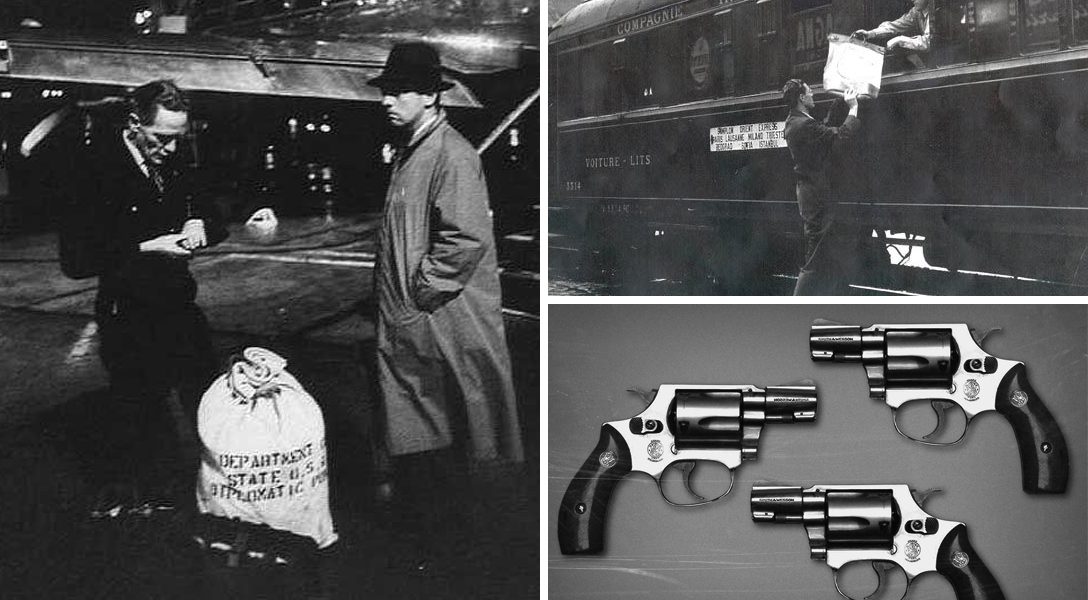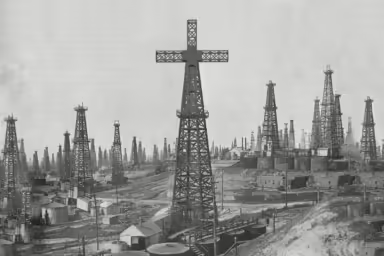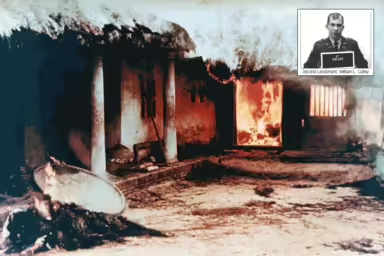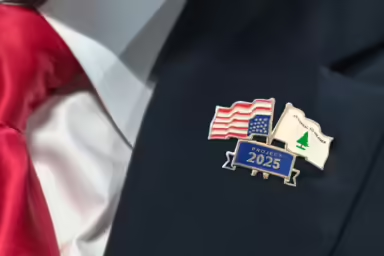New JFK Files: CIA Used State Department to Run Guns for Assassinations
Hid Details From JFK Investigators Until Now
A newly unredacted document sheds new light on CIA assassination operations planned by what was known as “The Health Alteration Committee.”
“JUSTIFICATION: Murder is not morally justifiable. Self-defense may be argued if the victim has knowledge which may destroy the resistance organization if divulged. Assassination of persons responsible for atrocities or reprisals may be regarded as just punishment. Killing a political leader whose burgeoning career is a clear and present danger to the cause of freedom may be held necessary.
But assassination can seldom be employed with a clear conscience. Persons who are morally squeamish should not attempt it.” — CIA Training Manual, 1952
Nor, apparently, should the morally squeamish be assigned to examine the means by which such noble ends are accomplished.
July 24 was a big day for JFK assassination researchers. The National Archives began releasing the remaining trove of classified/redacted documents related to the tragedy of November 22, 1963.
WhoWhatWhy is now combing through these files, which were either fully or partially held back from an earlier release of several hundred thousand documents during the 1990s. By law, the remaining files must be made public by this October — unless President Trump agrees with the originating agency’s appeal to yet again keep the documents secret.
The release included over 3,000 “formerly released in part” documents — meaning they had previously been seen only with some key portions redacted. However, documents, especially official documents, do not always say what they mean, or mean what they say.
Notable in Harvey’s planning for operational security is his order that there be no notes or records of the recruitment of hitmen and that the Agency’s own “201” personnel files be phonied up to disguise their mission. The Agency blinded itself and anyone else who would rely on the documentary record.
Each of these releases must be examined not simply for what they literally say, but for the deeper meaning, revealing or obfuscatory, when placed in context with earlier and subsequent versions.
One eye-opening document we found was a report from the Rockefeller Commission titled Summary of Facts: Investigation of CIA Involvement in Plans to Assassinate Foreign Leaders (file name: DOCID-32105829.pdf; previously released under RIF# 178-10004-10116, dups. 178-10003-10355, 178-10004-10189, 178-10003-10241; also in the Ford Library).
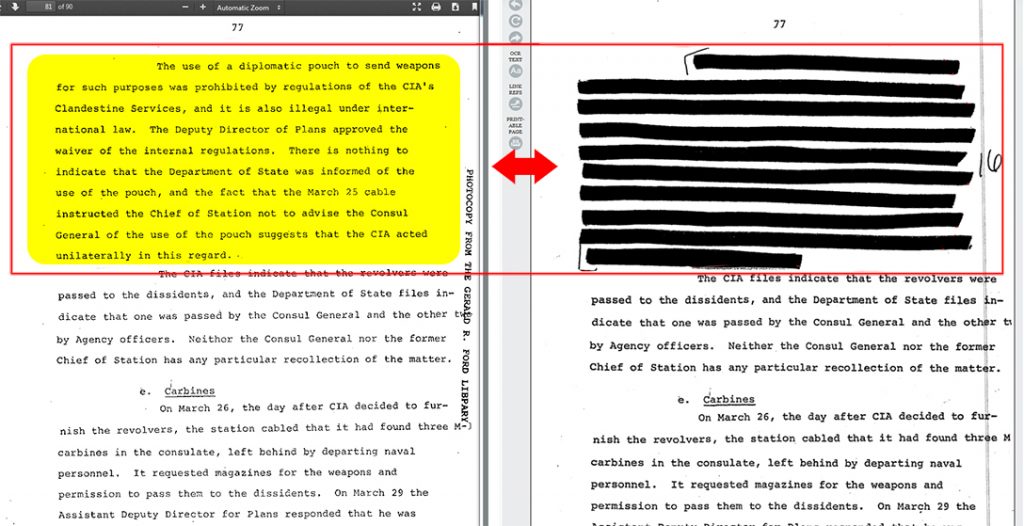
Written in 1975, this report spelled out the lengths that the CIA was willing to go to in 1960 to effect regime change. It describes a secret operation to help dissidents overthrow an old ally, military dictator Rafael Trujillo in the Dominican Republic. Fearing Trujillo’s sadistic tyranny had so alienated the population that his continuation in power would spark a communist-led uprising like Cuba’s the year before, the Eisenhower administration opted to support liberals who hoped to replace the dictator with a pro-US military-civilian junta.
That’s not news. This is: The newly unredacted portions of the document (quoted below in bold) shed new light on a gun-smuggling operation via diplomatic pouch:
On March 22, the CIA Station Chief renewed his request that headquarters send him three .38 calibre revolvers and ammunition by diplomatic pouch.
[…]
Three days later, on March 25, the Deputy Director of Plans (Editor’s note: Richard M. Bissell, Jr.) cabled the station setting forth United States policy with respect to the Dominican Republic and stating that the revolvers and ammunition would be sent by diplomatic pouch in the near future.
[…]
The use of a diplomatic pouch to send weapons for such purposes was prohibited by regulations of the CIA’s Clandestine Services, and it is also illegal under international law. The Deputy Director of Plans approved the waiver of the internal regulations. There is nothing to indicate that the Department of State was informed of the use of the pouch, and the fact that the March 25 cable instructed the Chief of Station not to advise the Consul General of the use of the pouch suggests that the CIA acted unilaterally in this regard.
The CIA files indicate that the revolvers were passed to the dissidents, and the Department of State files indicate that one was passed by the Consul General and the other two by Agency officers. Neither the Consul General nor the former Chief of Station has any particular recollection of the matter.
[…]
(Editor’s note: The following section refers to a separate attempt to smuggle in three M3 submachine-guns.)
The Chief of Station returned to Washington for consultations in early April. He was able to convince his superiors that the pouch was the only feasible and secure means of getting the weapons into the Dominican Republic for delivery to the dissidents. The Deputy Director for Plans approved on April 10, and the pouch was sent on April 14 but with the restriction that the weapons not be passed without further approval.
[…]
…and that the United States could not afford a precedent which might convince the world that our diplomatic pouches are used to deliver assassination weapons.
In each document of this trove, the same question arises: Why exactly did the government initially withhold or censor this particular phrase or fact? Beyond the usual reasons — disclosure of sources and methods that could put spies and agents at risk — what justification might there have been for withholding evidence of official law-breaking, even murder of political foes, from investigative agencies and the public?
At first glance, you might think this document was censored in order to disguise an embarrassing exception to the general prohibition against using diplomatic cover — that repeatedly redacted word “pouch” — to transfer weapons in violation of international law, specifically the Vienna Convention on Diplomatic Relations of 1961, which codified earlier bilateral treaties.
The shipping country certifies that the container (and there’s no limit on size) does not hold anything inconsistent with diplomatic use; in return, Article 27.3 bars the host country from opening or inspecting the contents, even with an X-ray. But such secrecy was (and is) simply too tempting for criminally inclined diplomats and countries alike.
The US has always denied using diplomatic pouches to smuggle contraband, drugs, guns, poisons, detonators, nuclear material — Or, at least, its representatives have “no particular recollection…” — while demanding that its word be taken as true.
Conveniently, there’s no way of proving otherwise, except with a confession or accidental discovery.
Cynicism and hypocrisy lie behind this diplomatic word of honor. “Gentlemen do not read other gentlemen’s mail,” President Herbert Hoover’s Secretary of State Henry Stimson once sneered. (They leave that to the FBI and CIA, both of which established long-running and illegal programs to do just that.)
More likely, the key to the redactions comes in the last line of the above quote: The real motive was to hide the fact that the weapons were to be used in an attempted assassination of a head of state — an action specifically prohibited by both internal policy and US law.
The punctilious obedience to policy expressed in this report was actually the exception, whereas breaking the rule, in the manner described here, was common practice in CIA tradecraft — as evidenced by the fact it required authorization from higher authority in the CIA in order to avoid embarrassment by “rogue” operations. So the earlier release of a strategically redacted version actually served as a kind of meta-cover-up, a strategy to reveal a little to conceal a lot.
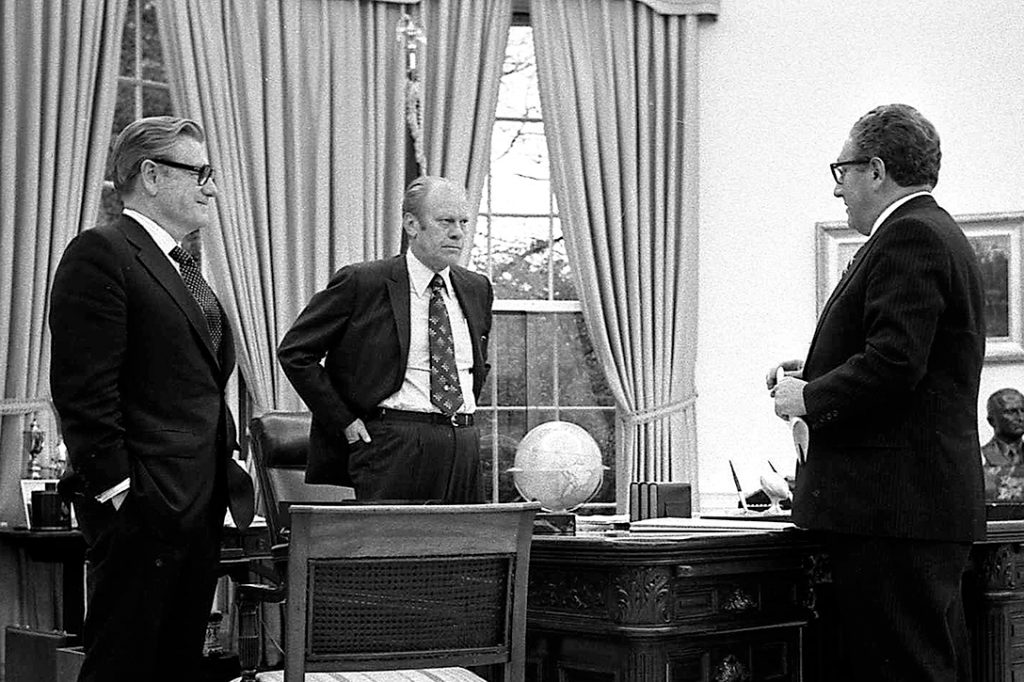
Photo credit: National Archives / Wikimedia
This can be seen more clearly if viewed in historical context. The President’s Commission on CIA Activities Within the United States, empanelled in 1975 by President Gerald Ford in the wake of the Watergate scandal, was headed by Ford’s newly installed Vice President, Nelson Rockefeller.
Rockefeller had a long and intimate relationship with the CIA. His family’s businesses worldwide provided information, cover for agents, and safehouses going back at least to the Office of Strategic Services (OSS) in World War II, and the future vice president himself supervised operations in Latin America for CIA’s forerunner, the Office of Policy Coordination. And Ford’s National Security Adviser Henry Kissinger had been plucked from academia as Nelson’s foreign policy tutor in 1958, then loaned to Nixon.
Damage Control
.
Given this nexus, it defies the odds that either man was not already privy to the Agency’s secrets, including assassinations. The purpose of releasing the carefully redacted documents was not to reveal those activities but to head off congressional investigations already underway — in short, damage control — as Kissinger and former DCI Richard Helms made clear in this “memorandum of conversation” in the White House.
The Rockefeller Commission gingerly examined allegations that the spy agency had engaged in assassinations of foreign leaders, among other activities that violated US and international laws. The assassination targets included not only the much-hated dictator Trujillo but earlier the elected president of Guatemala, Jacobo Arbenz, as evidenced by materials finally released by CIA in 1997.
These included a carefully compiled and vetted hit-list of suspected communists with the victims’ names still redacted — 25 years after the fact — to prevent disclosure of whether the murders contemplated on the “Junta disposal list” were successful.
Later, Patrice Lumumba of the newly independent Congo and other leaders were marked for murder, most notably, Fidel Castro in Cuba, along with, possibly, Ngo Dinh Diem of South Vietnam, during the Kennedy years and later, Salvador Allende of Chile and his military chief, Gen. Rene Schneider, by Nixon, Kissinger himself and DCI Helms, all of whom denied responsibility for the work of their henchmen.
“The Health Alteration Committee”
.
The assassinations were planned by the CIA’s Special Affairs Staff, which had a “Health Alteration Committee” to evaluate targets. This was an operational unit hidden in the Signals Intelligence section “D” of the Foreign Intelligence division, code-named KUTUBE/D. The actual program, dubbed “Executive Action” and the Cuban component code-named ZR RIFLE, was managed by a veteran CIA officer, William Harvey, and his deputy, Sam Halpern.
To maintain the “plausible deniability” of the president and of the CIA itself, the so-called “wetwork” was hired out to henchmen of organized crime (the Sicilian-American Mafia), who recruited foreign gangsters and mercenaries as cut-outs, decoys and patsies.
In some cases, Harvey’s program empowered ambitious and sympathetic foreign military units or mercenaries on loan to do what the US wanted but couldn’t do without unacceptable repercussions, ranging from diplomatic embarrassment to war. Harvey notoriously called this murder program “the last resort beyond last resort and a confession of weakness.”
Notable in Harvey’s planning for operational security is his order that there be no notes or records of the recruitment of hitmen and that the Agency’s own “201” personnel files be phonied up to disguise their mission. The Agency blinded itself and anyone else who would rely on the documentary record.
Then, to compound the epistemological problem (how do we know what we think we know?) veteran CIA officers like E. Howard Hunt, hired by the Nixon White House to conduct psychological warfare against political opponents, fabricated cables to implicate JFK personally in the decision of the CIA’s coup plotters to kill Diem.
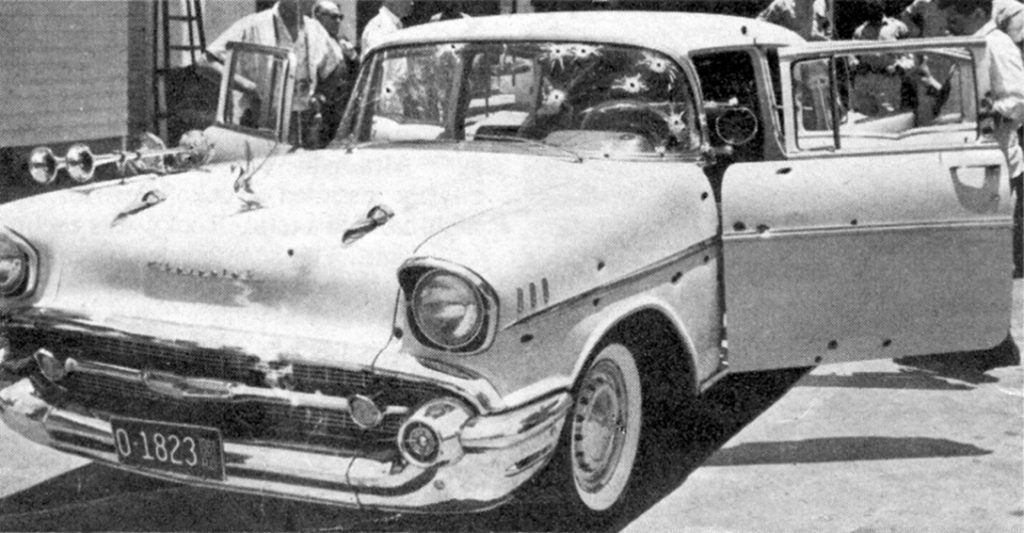
Photo credit: LatinAmericanStudies.com
Trujillo was in fact assassinated in March 1961 by Dominicans who riddled his car with a machine gun.
The CIA, of course, claimed it had nothing to do with it. Presumably, any fingerprints, literal or figurative, had been carefully wiped from the guns slipped into diplomatic pouches or otherwise conveyed to the assassins. (In Arbenz’s case, United Fruit Co. loaned CIA a freighter for a multi-ton delivery of weapons to troops it trained for the coup, but Arbenz fled into exile and later committed suicide in a New York hotel room.)
It was the bungled attempts to kill Castro that prompted the so-called Church and Pike Committees — Senate Select Committee to Study Governmental Operations with Respect to Intelligence Activities, chaired by Sen. Frank Church, (D-ID), and the House subcommittee chaired by Otis Pike, (D-NY) — to reveal the existence of the program in 1975 and to request documents like this one.
But according to historian John Prados, Ford’s deputy, Richard Cheney, personally edited materials, including the summary provided to the Rockefeller Commission that was based on a CIA history of the Guatemala coup, commissioned in 1967. The Guatemala operation, codenamed PBSUCCESS, provoked an uprising of peasants who were denied the land reforms Arbenz had promised; this led to a 50-year civil war in which tens of thousands were killed by the US-supported army and police.
In the Dominican Republic, the assassination of Trujillo (“he may be a son-of-a-bitch but he’s our son-of-a-bitch,” FDR once said) led to a crackdown by his son, which provoked an uprising that the US suppressed by sending in airborne troops in 1965 to install another regime.
In the end, the Rockefeller Commission accepted the CIA’s word — that is, Cheney’s heavily redacted version — that such operations were prohibited by policy and law. Nonetheless, as suggested by the Commission in its 1975 report, Ford issued an executive order that formally reiterated a ban on political murder — a policy that remains honored in the breach.
In other words, “We didn’t do it and we promise to never do it again.”
WhoWhatWhy will continue to bring you updates.
Correction notice, 8/15/2017, 9:57pm: This article originally and incorrectly stated that Henry Stimson was FDR’s Secretary of State. He was Herbert Hoover’s Secretary of State and served Roosevelt as Secretary of War.
DOCID-32105829
Related front page panorama photo credit: Jacobo Arbenz (Gobierno de Guatemala / Wikimedia), Rafael Trujillo (Unknown / Wikimedia), Patrice Lumumba (Harry Pot / Wikimedia), Fidel Castro (Library of Congress / Wikimedia), Ngo Dinh Diem (DoD / Wikimedia) and Salvador Allende (Unknown / Wikimedia).
